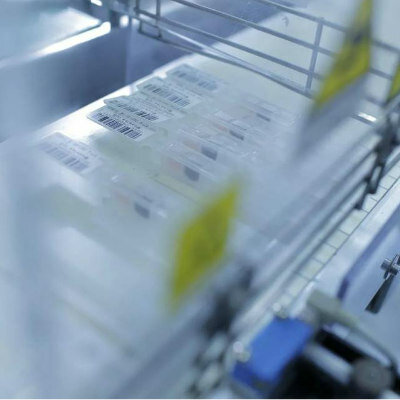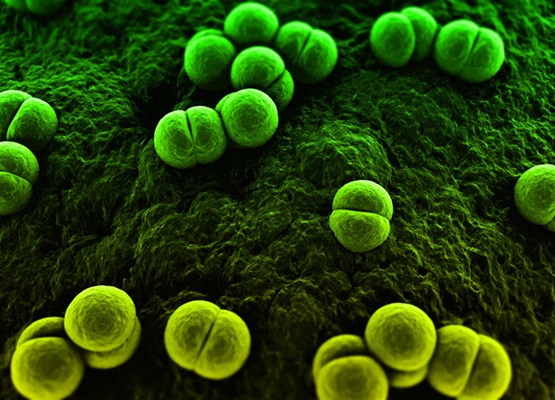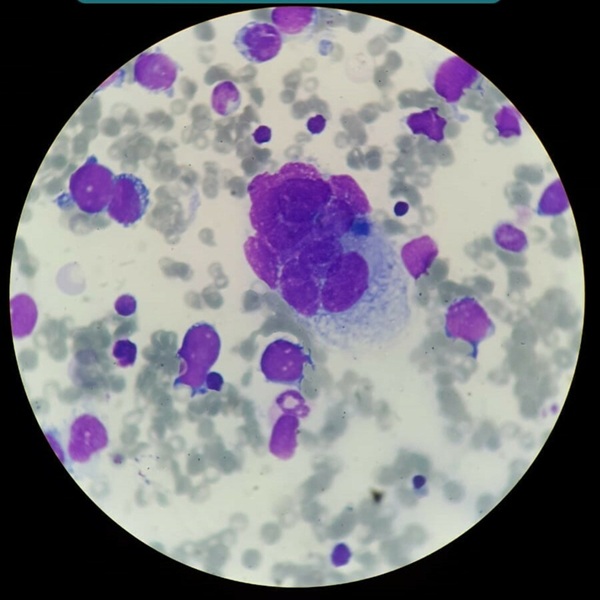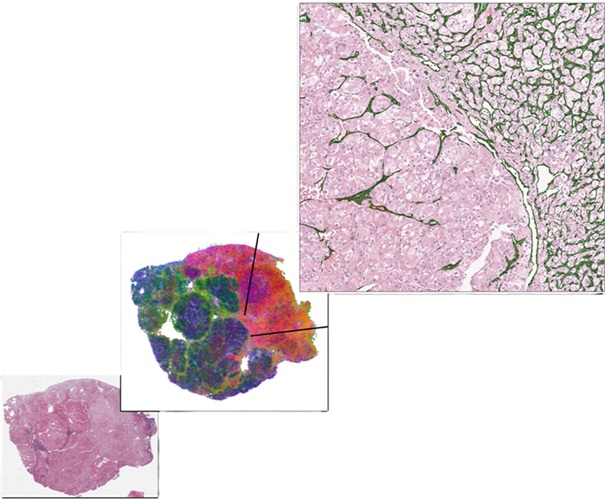HDL Does Not Always Lower Risk of CV Disease
|
By LabMedica International staff writers Posted on 02 Aug 2018 |
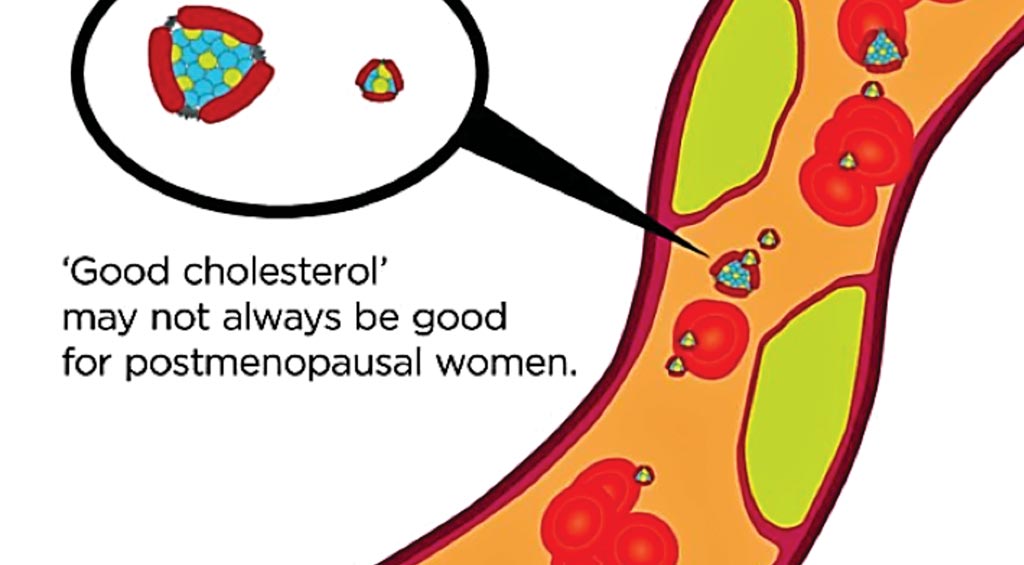
Image: Postmenopausal factors may have an impact on the heart-protective qualities of high-density lipoproteins (HDL), also known as ‘good cholesterol (Photo courtesy of University of Pittsburgh Medical Center).
High-density lipoproteins (HDL) are a family of particles found in the blood that vary in sizes and cholesterol contents. HDL has traditionally been measured as the total cholesterol carried by the HDL particles, known as HDL cholesterol.
HDL cholesterol, however, does not necessarily reflect the overall concentration, the uneven distribution, or the content and function of HDL particles. Previous studies have demonstrated the heart-protective features of HDL. This good cholesterol carries fats away from the heart, reducing the build-up of plaque and lowering the potential for cardiovascular disease.
Scientists from the University of Pittsburgh Medical School (Pittsburgh, PA, USA) studied 1,138 women aged 45 through 84 enrolled across the USA in the Multi-Ethnic Study of Atherosclerosis (MESA) that began in 1999 and is still following participants today. The participants mean age was 61.8 ± 10.3; and 61% natural-, 21% surgical-, and 18% peri-menopause.
The team observed that the number and size of the HDL particles and total cholesterol carried by HDL particles. The study also looked at how age when women transitioned into post menopause, and the amount of time since transitioning, may impact the expected cardio-protective associations of HDL measures. The harmful association of higher HDL cholesterol with atherosclerosis risk was most evident in women with older age at menopause and who were greater than, or equal to, 10 years into post menopause.
In contrast to HDL cholesterol, a higher concentration of total HDL particles was associated with lower risk of atherosclerosis. Additionally, having a high number of small HDL particles was found beneficial for postmenopausal women. These findings persist irrespective of age and how long it has been since women became postmenopausal. On the other hand, large HDL particles are linked to an increased risk of cardiovascular disease close to menopause. During this time, the quality of HDL may be reduced, increasing the chance for women to develop atherosclerosis or cardiovascular disease.
The authors concluded that elevated HDL-C may not always be cardioprotective in postmenopausal women. The cardioprotective capacity of large HDL-P may adversely compromise close to menopause supporting the importance of assessing how the menopause transition might impact HDL quality and related cardiovascular disease risk later in life.
Samar R. El Khoudary, PhD, MPH, FAHA, an associate professor and lead author of the study, said, ‘This study confirms our previous work on a different group of women and suggests that clinicians need to take a closer look at the type of HDL in middle-aged and older women, because higher HDL cholesterol may not always be as protective in postmenopausal women as we once thought. High total HDL cholesterol in postmenopausal women could mask a significant heart disease risk that we still need to understand." The study was published on July 19, 2018, in the journal Arteriosclerosis, Thrombosis, and Vascular Biology.
Related Links:
University of Pittsburgh Medical School
HDL cholesterol, however, does not necessarily reflect the overall concentration, the uneven distribution, or the content and function of HDL particles. Previous studies have demonstrated the heart-protective features of HDL. This good cholesterol carries fats away from the heart, reducing the build-up of plaque and lowering the potential for cardiovascular disease.
Scientists from the University of Pittsburgh Medical School (Pittsburgh, PA, USA) studied 1,138 women aged 45 through 84 enrolled across the USA in the Multi-Ethnic Study of Atherosclerosis (MESA) that began in 1999 and is still following participants today. The participants mean age was 61.8 ± 10.3; and 61% natural-, 21% surgical-, and 18% peri-menopause.
The team observed that the number and size of the HDL particles and total cholesterol carried by HDL particles. The study also looked at how age when women transitioned into post menopause, and the amount of time since transitioning, may impact the expected cardio-protective associations of HDL measures. The harmful association of higher HDL cholesterol with atherosclerosis risk was most evident in women with older age at menopause and who were greater than, or equal to, 10 years into post menopause.
In contrast to HDL cholesterol, a higher concentration of total HDL particles was associated with lower risk of atherosclerosis. Additionally, having a high number of small HDL particles was found beneficial for postmenopausal women. These findings persist irrespective of age and how long it has been since women became postmenopausal. On the other hand, large HDL particles are linked to an increased risk of cardiovascular disease close to menopause. During this time, the quality of HDL may be reduced, increasing the chance for women to develop atherosclerosis or cardiovascular disease.
The authors concluded that elevated HDL-C may not always be cardioprotective in postmenopausal women. The cardioprotective capacity of large HDL-P may adversely compromise close to menopause supporting the importance of assessing how the menopause transition might impact HDL quality and related cardiovascular disease risk later in life.
Samar R. El Khoudary, PhD, MPH, FAHA, an associate professor and lead author of the study, said, ‘This study confirms our previous work on a different group of women and suggests that clinicians need to take a closer look at the type of HDL in middle-aged and older women, because higher HDL cholesterol may not always be as protective in postmenopausal women as we once thought. High total HDL cholesterol in postmenopausal women could mask a significant heart disease risk that we still need to understand." The study was published on July 19, 2018, in the journal Arteriosclerosis, Thrombosis, and Vascular Biology.
Related Links:
University of Pittsburgh Medical School
Latest Clinical Chem. News
- AI-Powered Blood Test Accurately Detects Ovarian Cancer
- Automated Decentralized cfDNA NGS Assay Identifies Alterations in Advanced Solid Tumors
- Mass Spectrometry Detects Bacteria Without Time-Consuming Isolation and Multiplication
- First Comprehensive Syphilis Test to Definitively Diagnose Active Infection In 10 Minutes
- Mass Spectrometry-Based Monitoring Technique to Predict and Identify Early Myeloma Relapse
- ‘Brilliantly Luminous’ Nanoscale Chemical Tool to Improve Disease Detection
- Low-Cost Portable Screening Test to Transform Kidney Disease Detection
- New Method Uses Pulsed Infrared Light to Find Cancer's 'Fingerprints' In Blood Plasma
- Carbon Nanotubes Help Build Highly Accurate Sensors for Continuous Health Monitoring
- Paper-Based Device Boosts HIV Test Accuracy from Dried Blood Samples
- AI-Powered Raman Spectroscopy Method Enables Rapid Drug Detection in Blood
- Novel LC-MS/MS Assay Detects Low Creatinine in Sweat and Saliva
- Biosensing Technology Breakthrough Paves Way for New Methods of Early Disease Detection
- New Saliva Test Rapidly Identifies Paracetamol Overdose
- POC Saliva Testing Device Predicts Heart Failure in 15 Minutes

- Screening Tool Detects Multiple Health Conditions from Single Blood Drop
Channels
Molecular Diagnostics
view channel
POC Diagnostic Platform Combines Immunoassay and Molecular Testing
An innovative diagnostic platform offers superior sensitivity across all sample types, including blood, compared to existing rapid tests, while maintaining a low-cost, user-friendly design.... Read more
Single Blood Test Could Detect Different Types of Cancer at Early Stages
Currently, reliable screening for only a few types of cancer is available, such as those affecting the breast, bowel, cervix (neck of the womb), and lung for individuals at high risk. While these screenings... Read moreHematology
view channel
First Point-of-Care Heparin Monitoring Test Provides Results in Under 15 Minutes
Heparin dosing requires careful management to avoid both bleeding and clotting complications. In high-risk situations like extracorporeal membrane oxygenation (ECMO), mortality rates can reach about 50%,... Read more
New Scoring System Predicts Risk of Developing Cancer from Common Blood Disorder
Clonal cytopenia of undetermined significance (CCUS) is a blood disorder commonly found in older adults, characterized by mutations in blood cells and a low blood count, but without any obvious cause or... Read moreImmunology
view channel
Stem Cell Test Predicts Treatment Outcome for Patients with Platinum-Resistant Ovarian Cancer
Epithelial ovarian cancer frequently responds to chemotherapy initially, but eventually, the tumor develops resistance to the therapy, leading to regrowth. This resistance is partially due to the activation... Read more
Machine Learning-Enabled Blood Test Predicts Immunotherapy Response in Lymphoma Patients
Chimeric antigen receptor (CAR) T-cell therapy has emerged as one of the most promising recent developments in the treatment of blood cancers. However, over half of non-Hodgkin lymphoma (NHL) patients... Read moreMicrobiology
view channel
New Blood Test Detects Up to Five Infectious Diseases at POC
Researchers have developed a prototype flow-through assay capable of detecting up to five different infections, with results that can be quickly analyzed and transmitted via a specialized smartphone app.... Read more
Molecular Stool Test Shows Potential for Diagnosing TB in Adults with HIV
Tuberculosis (TB), caused by the bacterium Mycobacterium tuberculosis, led to 1.25 million deaths in 2023, with 13% of those occurring in people living with HIV. The current primary diagnostic method for... Read morePathology
view channel
Groundbreaking Chest Pain Triage Algorithm to Transform Cardiac Care
Cardiovascular disease is responsible for a third of all deaths worldwide, and chest pain is the second most common reason for emergency department (ED) visits. With EDs often being some of the busiest... Read more
AI-Based Liquid Biopsy Approach to Revolutionize Brain Cancer Detection
Detecting brain cancers remains extremely challenging, with many patients only receiving a diagnosis at later stages after symptoms like headaches, seizures, or cognitive issues appear. Late-stage diagnoses... Read moreTechnology
view channel
Advanced Predictive Algorithms Identify Patients Having Undiagnosed Cancer
Two newly developed advanced predictive algorithms leverage a person’s health conditions and basic blood test results to accurately predict the likelihood of having an undiagnosed cancer, including ch... Read more
Light Signature Algorithm to Enable Faster and More Precise Medical Diagnoses
Every material or molecule interacts with light in a unique way, creating a distinct pattern, much like a fingerprint. Optical spectroscopy, which involves shining a laser on a material and observing how... Read more
Disposable Microchip Technology Could Selectively Detect HIV in Whole Blood Samples
As of the end of 2023, approximately 40 million people globally were living with HIV, and around 630,000 individuals died from AIDS-related illnesses that same year. Despite a substantial decline in deaths... Read more
Pain-On-A-Chip Microfluidic Device Determines Types of Chronic Pain from Blood Samples
Chronic pain is a widespread condition that remains difficult to manage, and existing clinical methods for its treatment rely largely on self-reporting, which can be subjective and especially problematic... Read moreIndustry
view channel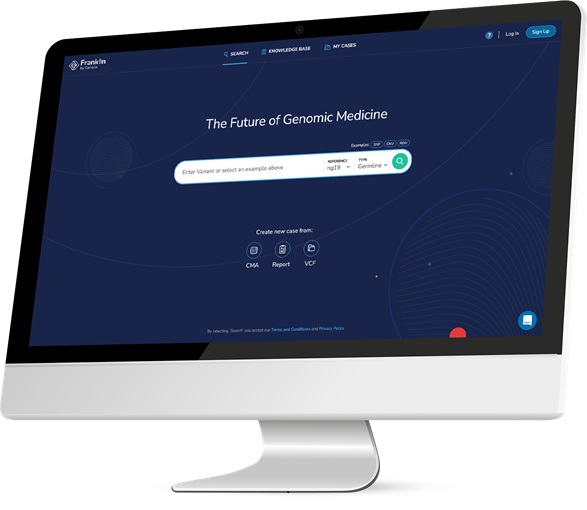
Qiagen Acquires NGS Analysis Software Company Genoox
QIAGEN (Venlo, the Netherlands) has signed a definitive agreement to acquire Genoox (Tel Aviv, Israel), a provider of artificial intelligence (AI)-powered software that enables clinical labs to scale and... Read more
Cepheid and Oxford Nanopore Technologies Partner on Advancing Automated Sequencing-Based Solutions
Cepheid (Sunnyvale, CA, USA), a leading molecular diagnostics company, and Oxford Nanopore Technologies (Oxford, UK), the company behind a new generation of sequencing-based molecular analysis technologies,... Read more
Grifols and Tecan’s IBL Collaborate on Advanced Biomarker Panels
Grifols (Barcelona, Spain), one of the world’s leading producers of plasma-derived medicines and innovative diagnostic solutions, is expanding its offer in clinical diagnostics through a strategic partnership... Read more









